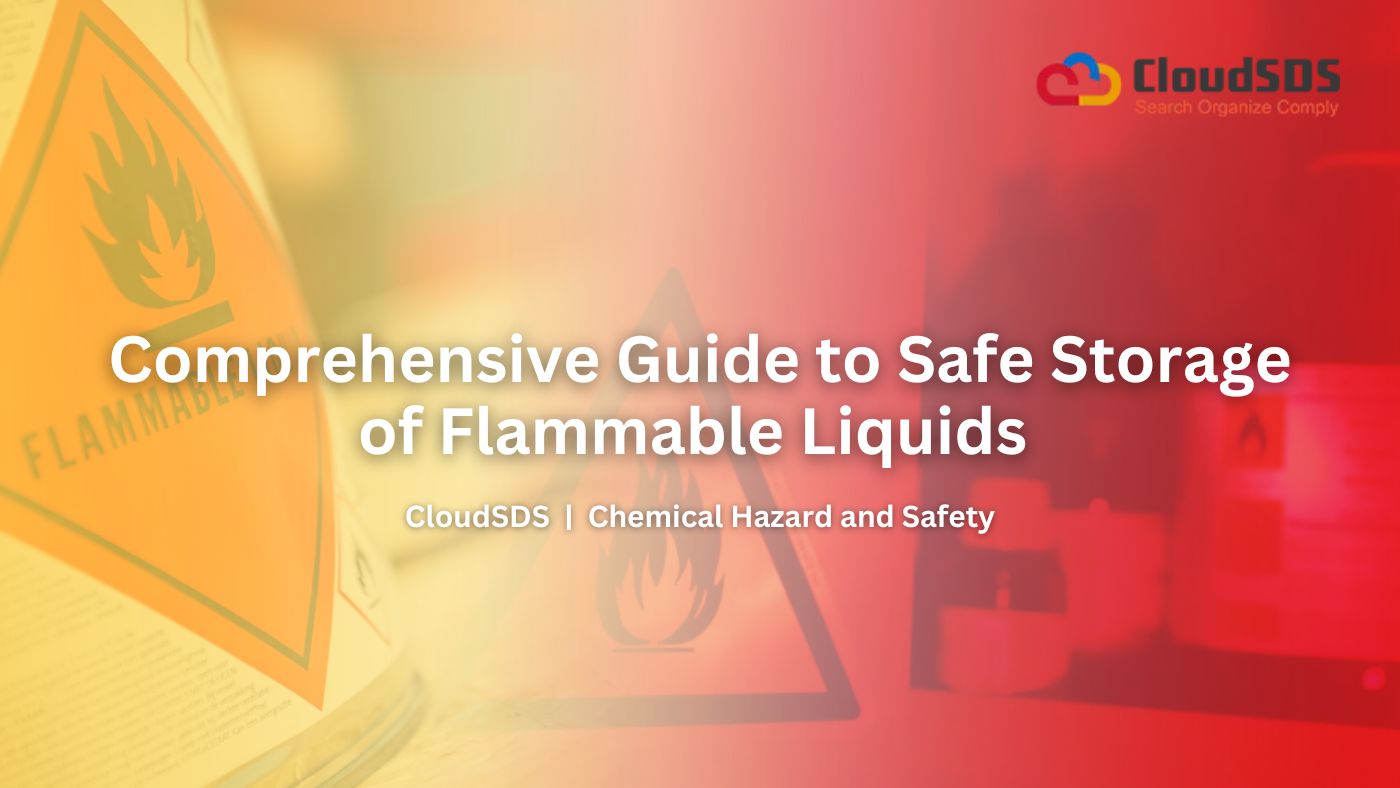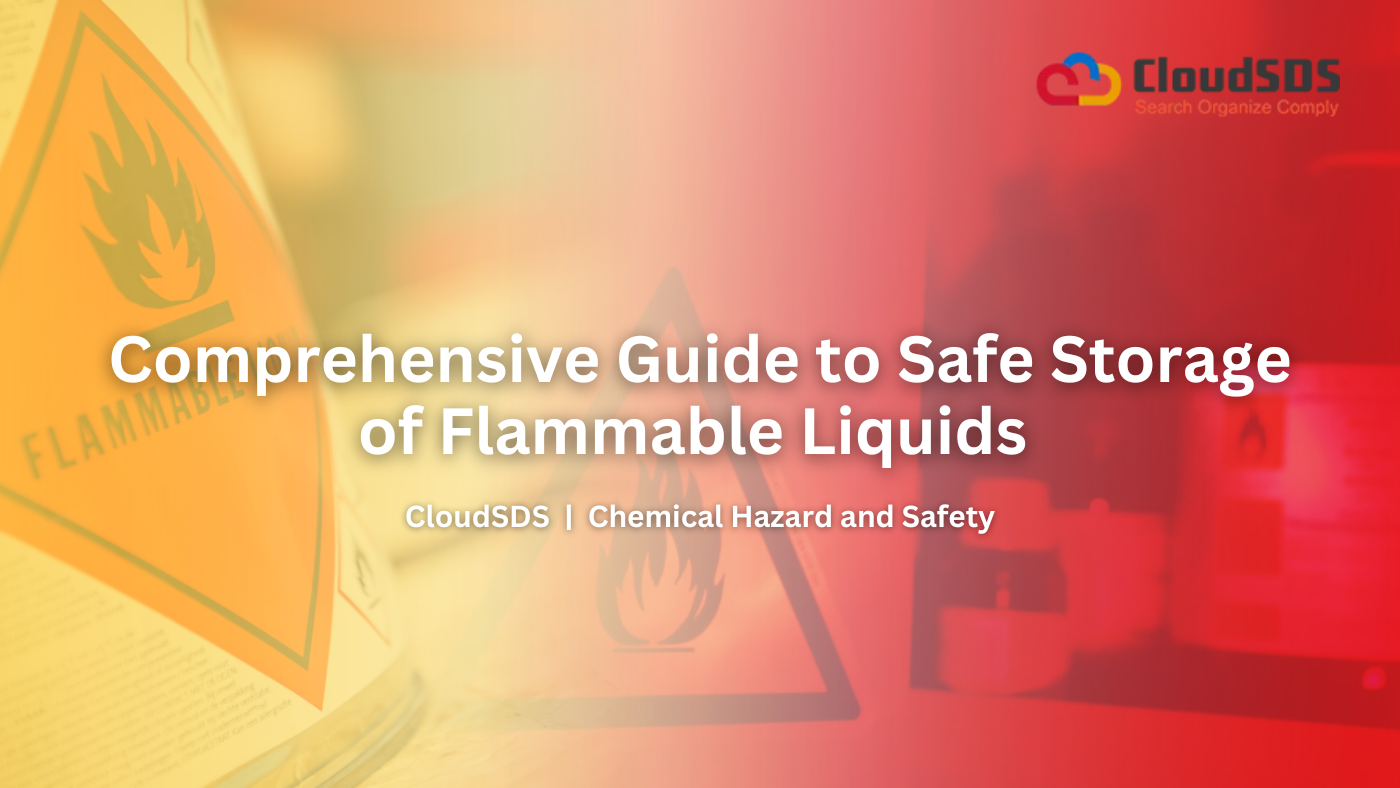Table of Contents
- Introduction
- Where Should Flammable Liquids Be Stored
- Classification of Flammable Liquids
- Quantity Limits and Storage Locations
- Separation from Ignition Sources and Incompatibles
- Ventilation and Temperature Control
- Outdoor Storage and Bulk Tanks
- Handling and Transfer Practices
- Administrative Controls and Training
- Fire Protection and Emergency Preparedness
- Special Considerations
- Summary of Best Practices
Introduction
Due to their extreme flammability and potential for ignition by even the smallest spark of electricity, including static electricity, the safe disposal of flammable liquids is absolutely vital for every business and homeowner. Common examples of these potentially hazardous substances include paints, fuels, solvents, rubbing alcohol, and pesticides, all of which require careful management. Proper storing and disposal of such liquids not only safeguards your household and the public but also protects the environment.
The flammability of a liquid is determined by its flashpoint, defined as the lowest temperature at which the liquid produces enough vapor to ignite. Any liquid with a flashpoint below 140 degrees Fahrenheit (60 degrees Celsius) is classified as flammable and falls under strict state and federal regulations, making it illegal to discard them in household trash or pour them down drains. Therefore, understanding and adhering to proper procedures for these materials is paramount to ensuring safety and environmental well-being.
Where Should Flammable Liquids Should be Stored
Proper storage of flammable liquids hinges on understanding hazard classifications, adhering to regulatory limits on quantities and storage locations, using approved containers and cabinets, ensuring adequate separation from ignition sources, and implementing robust administrative and engineering controls.
1. Classification of Flammable Liquids
Flammable and combustible liquids are classified by flash point and boiling point. Two major standards govern these classifications:
- OSHA 29 CFR 1910.106 categorizes liquids by “Category 1” through “Category 4.”
- NFPA 30 is divided into Class IA, IB, IC, II, IIIA, and IIIB.
| Classification Standard | Class/Category | Flash Point | Boiling Point |
|---|---|---|---|
| OSHA | Category 1 | < 73.4 °F (23 °C) and ≤ 95 °F (35 °C) | ≤ 95 °F (35 °C) |
| OSHA | Category 2 | < 73.4 °F (23 °C) and > 95 °F (35 °C) | > 95 °F (35 °C) |
| OSHA | Category 3 | ≥ 73.4 °F (23 °C) and ≤ 140 °F (60 °C) | — |
| OSHA | Category 4 | > 140 °F (60 °C) and ≤ 199.4 °F (93 °C) | — |
| NFPA | Class IA | < 73 °F (22.8 °C) | < 100 °F (37.8 °C) |
| NFPA | Class IB | < 73 °F (22.8 °C) | ≥ 100 °F (37.8 °C) |
| NFPA | Class IC | ≥ 73 °F (22.8 °C) and < 100 °F (37.8 °C) | — |
| NFPA | Class II | ≥ 100 °F (37.8 °C) and < 140 °F (60 °C) | — |
| NFPA | Class IIIA | ≥ 140 °F (60 °C) and < 200 °F (93.4 °C) | — |
| NFPA | Class IIIB | ≥ 200 °F (93.4 °C) | — |
2. Quantity Limits and Storage Locations
2.1 Indoor Storage Outside Cabinets
- Maximum 25 gallons of flammable/combustible liquids per room (outside approved cabinet).
- Stored rooms must not serve as exits, stairways, or normal passageways.
2.2 Approved Storage Cabinets
Quantity per cabinet:
- ≤ 60 gallons of flammable (Categories 1–3 / Class IA–IIIA)
- ≤ 120 gallons of combustible (Category 4 / Class IIIB)
Maximum cabinets per area: Three cabinets per storage area.
Cabinet Construction Requirements:
- Metal cabinets:
- Double-walled, 18-gauge sheet metal minimum
- 1½ inch air space between walls
- Three-point cold-shut latch, 2-inch raised sill
- Wooden cabinets:
- Exterior-grade plywood ≥ 1 inch thick
- Rabbeted, screwed joints, fire-retardant paint
Labeling: “Flammable–Keep Fire Away” in conspicuous lettering.
2.3 Inside Storage Rooms (NFPA 30 Chapter 9 & 12)
- Size limits:
- ≤ 500 sq ft for 2-hour fire-rated rooms
- ≤ 150 sq ft for 1-hour fire-rated rooms
- Quantity allowance: Based on floor area and fire rating; must maintain 3 ft aisles
- Ventilation: Gravity or mechanical; intake/exhaust on exterior walls
- Dispensing: Only by approved pump or self-closing faucet; no open pouring
- Egress: Doors must open outward; corridors must be clear of obstructions
3. Separation from Ignition Sources and Incompatibles
3.1 Ignition Source Control
- Prohibit smoking, open flames, and hot work near storage.
- Use intrinsically safe electrical equipment in classified zones.
- Use bonding and grounding during transfers to prevent static sparks.
3.2 Chemical Segregation
- Separate flammables from oxidizers, acids, bases, and water-reactives.
- Maintain dedicated cabinets or segregated areas per compatibility charts.
- Use secondary containment for spill control.
4. Ventilation and Temperature Control
- Use natural or mechanical ventilation to avoid vapor accumulation.
- Maintain storage area temperature below the lowest flash point.
- Avoid direct sunlight and heat-producing equipment nearby.
5. Outdoor Storage and Bulk Tanks
- Above-ground tanks (> 60 gal) require secondary containment dikes per NFPA 30.
- Dikes must contain 100% of tank capacity or 25% of combined capacity, whichever is greater.
- Tanks must be ≥ 25 ft from buildings or separated by a 5 ft, 1-hour fire-rated barrier.
- Post “No Smoking Within 50 Ft” signage and emergency shutoff instructions.
6. Handling and Transfer Practices
- Use closed piping systems, safety cans, safety pumps, or approved faucets only.
- Safety cans: UL-listed, spring-loaded cap, flame arrestor, tight closure.
- Use bonding wires between dispensing containers and drums; connect grounding leads to earth.
7. Administrative Controls and Training
Develop written procedures covering:
- Inventory limits, transfer methods, emergency response
- Spill cleanup protocols, waste disposal schedules
Train personnel on:
- Reading SDS; personal protective equipment (PPE) selection
- Proper use of cabinets, rooms, and transfer devices
- Fire extinguisher use and evacuation routes
8. Fire Protection and Emergency Preparedness
- Equip storage areas with portable fire extinguishers rated for Class B hazards.
- Install smoke detectors, fire alarms, and sprinkler systems (per NFPA 13).
- Use fire doors and rated separation walls.
- Conduct regular inspections of cabinets, spill containment, and ventilation systems.
- Ensure clear access for firefighting and occupant egress.
9. Special Considerations
Laboratory Settings:
- Work-area limits per NFPA 45; dedicated storage rooms per NFPA 30
Small-Scale Operations:
- Minimize on-hand quantities; substitute less flammable alternatives where possible
Waste Storage:
- Store residues in covered, labeled metal receptacles; dispose of daily
Static Control:
- Employ bonding, grounding, and vapor-recovery connections during transfers
10. Summary of Best Practices
- Classify liquids correctly by flash and boiling points.
- Limit quantities per OSHA/NFPA thresholds for rooms and cabinets.
- Use approved cabinets or dedicated storage rooms built per NFPA 30.
- Maintain separation from ignition sources and incompatible substances.
- Ensure ventilation and temperature control.
- Implement approved transfer methods with proper bonding/grounding.
- Establish administrative controls and rigorous employee training.
- Provide fire protection systems, inspections, and emergency planning.
Adherence to these guidelines—rooted in OSHA 29 CFR 1910.106 and NFPA 30—will significantly reduce fire and explosion risks, protect personnel, and ensure regulatory compliance.


Leave A Comment